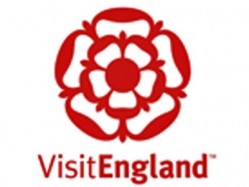VisitEngland launches online tool for restaurants to improve customer access

Designed in partnership with the British Hospitality Association (BHA) and the Restaurant Association, the new online tool provides detailed guidance on the information that may be required by disabled customers, including details of car parking, restaurant/bar areas and customer toilets.
“People with access needs require specific information about a venue in advance in order to be able to make an informed decision about whether an establishment can cater sufficiently for their needs,” said Ross Calladine, VisitEngland’s skills, welcome & accessibility manager for restaurants.
“Like any other tourist venue, should provide as much information to visitors as possible - this will help to enhance the visitor experience and also highlight areas where the business could improve.”
Step-by-step tool
Camilla Woods, policy director for the BHA, added: “We were delighted to work with VisitEngland on this step-by-step tool for restaurants and cafés. Access Statements are a really effective way for businesses to ensure customers with any specific access needs have the information they need and we are pleased to be able to recommend this new online tool to our members.”
Businesses are encouraged to write a general introduction describing their location and to summarise any specific services and facilities suitable for people with access needs.
Information covers the following areas:
- Restaurant and bar area -access to the area and layout, lighting, seating and tables, floor surfaces, alternative formats of menus available.
- Pre-arrival - transport services, a description of the streets in the area surrounding the restaurant (e.g. paved/cobbled/level/uneven), information provided in alternative formats such as large print and audio.
- Car parking and arrival - car parking, drop off points, alternative entry points, number of steps, handrails and ramps.
- Outdoor areas - accessibility of outdoor furniture, service offered to customers in outdoor area, layout (e.g. pavement, terrace, play area).
Additional areas that are covered include: customer toilets, private dining/function space accommodation and future plans for improvement.
Once a business has created their Access Statement they can then make this information readily available to visitors. Restaurants can promote their statement on their website if they have one, or post it where they have a listing on a company site or a generic ‘restaurant finder’ site. It should also be kept on hand for staff to use when describing over the phone what facilities they have.
The national tourist board launched a similar tool for pubs late last year. For more information visit www.visitengland.org/accessstatements.



























